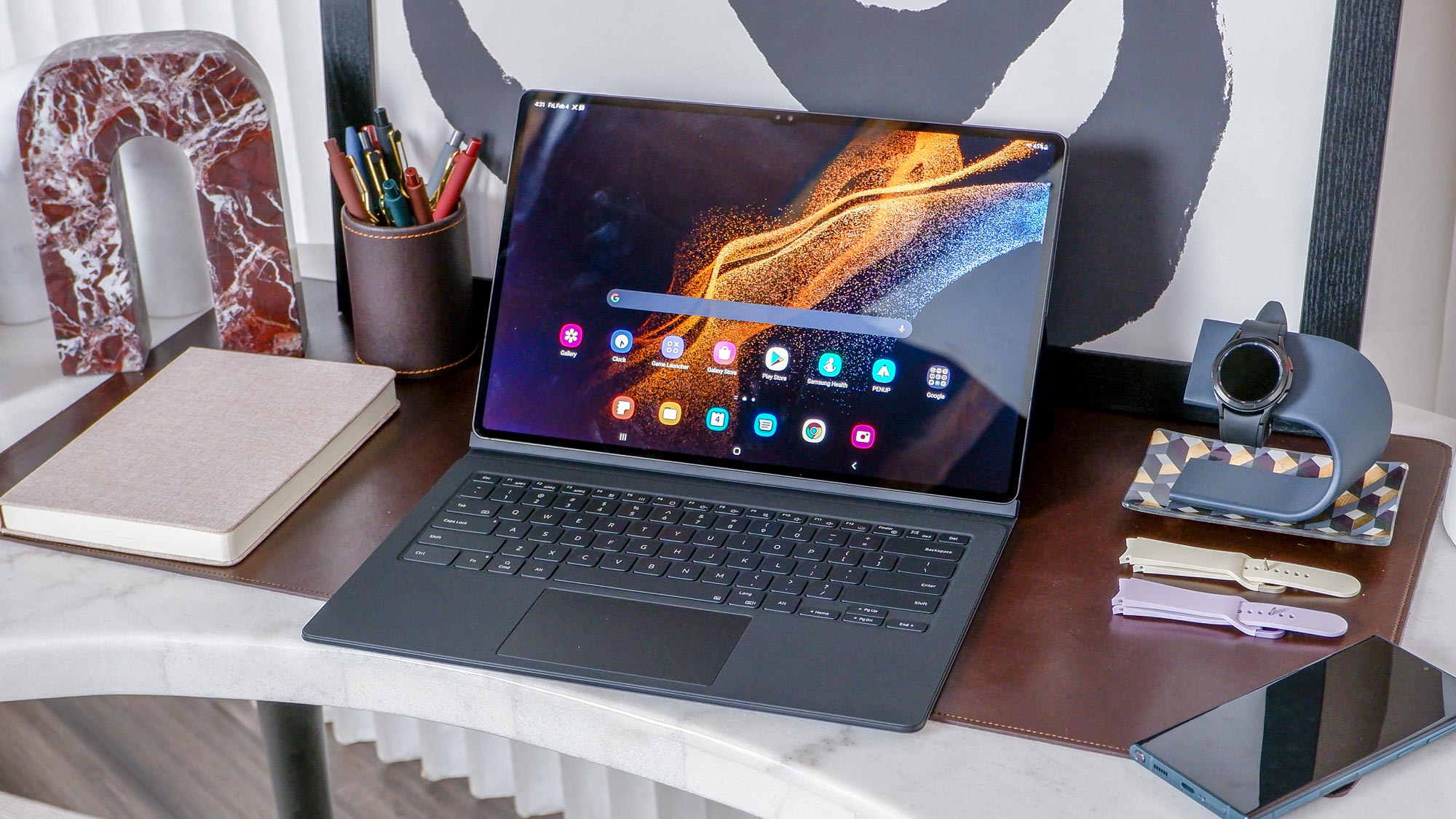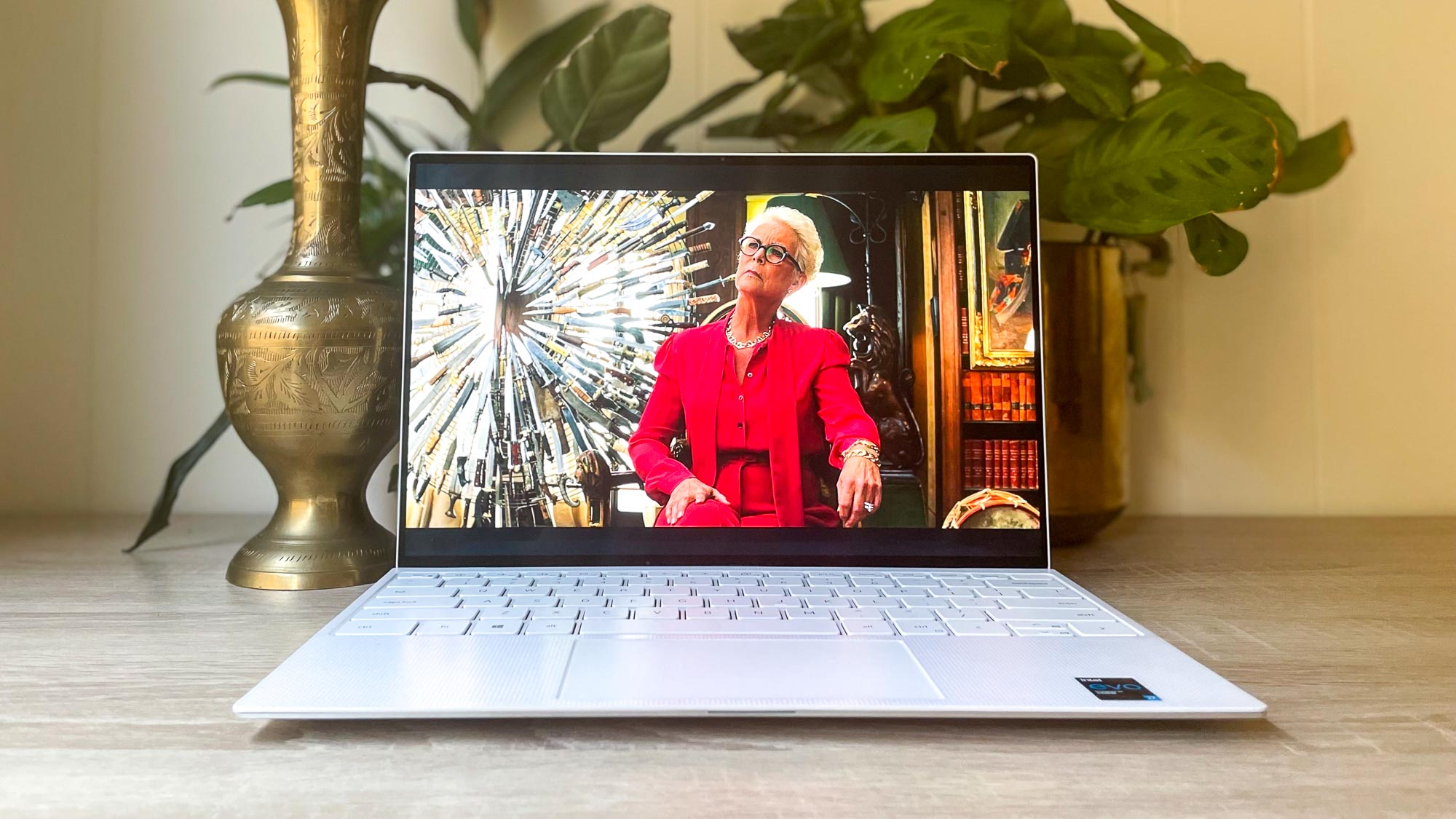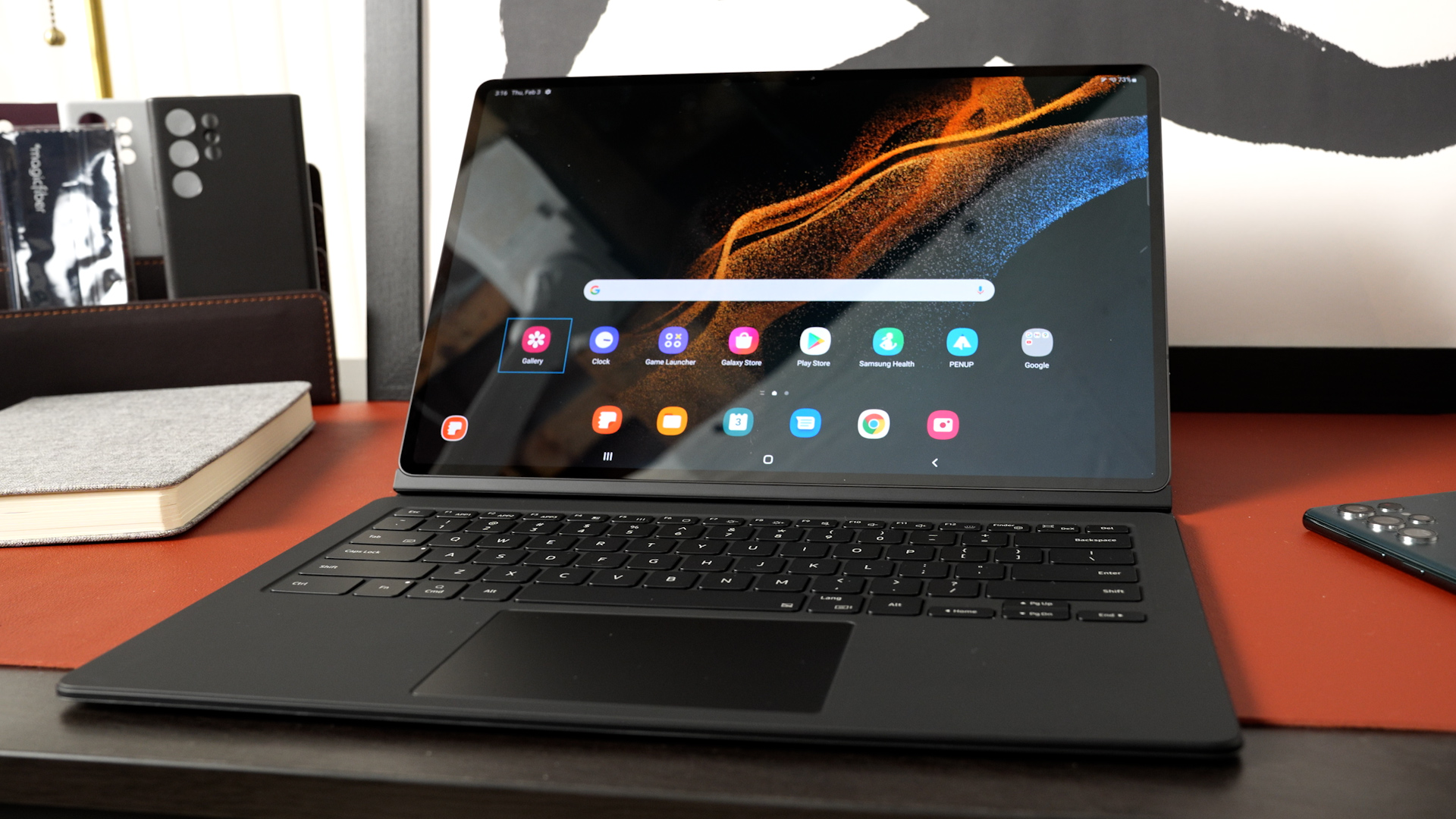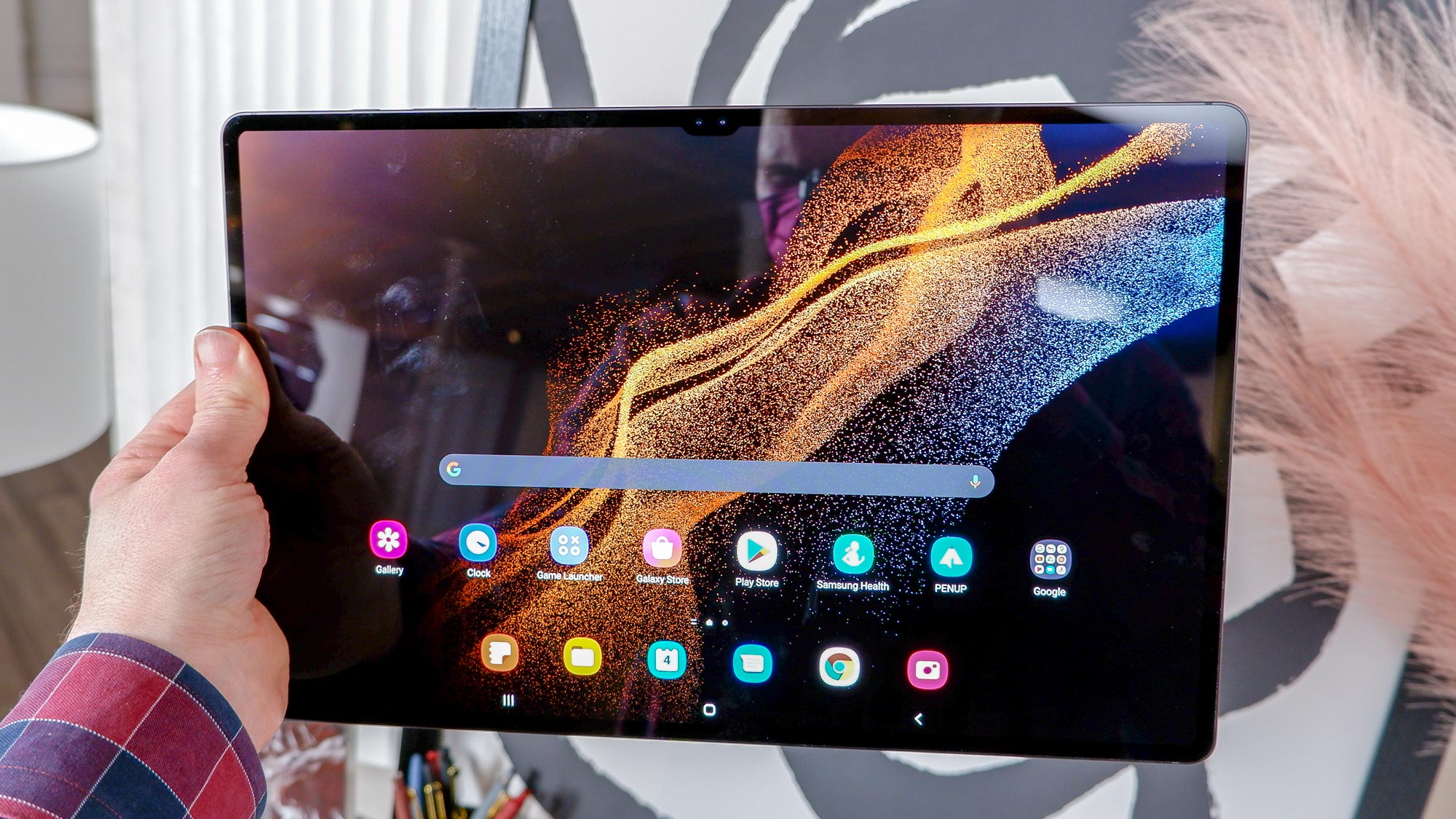Samsung Galaxy Tab S8 Ultra — here's how it could replace your laptop
Samsung's Ultra tablet is its most compelling laptop replacement yet

Samsung unveiled a slew of new Android devices during its Unpacked event on Wednesday (February 9), including three models of the new Galaxy Tab S8 tablet. They all look promising, but one loomed large above the rest in my mind: the Galaxy Tab S8 Ultra.
Perhaps it’s the Ultra’s remarkably large 14.6-inch 120Hz AMOLED display that helps it stand out from the pack. We won’t know for sure how well it stacks up against the best tablets on the market until we review one ourselves (stay tuned), but it’s certainly one of the largest and most powerful Android tablets you can buy. Plus, you can connect a detachable keyboard to the Ultra, hook it up to an external display and multitask across multiple screen using Samsung's DeX mode, so you can conceivably use it just like an Android-powered laptop.
But is it worth the expense and hassle? Could you really replace your laptop with this super-sized Android tablet? There’s certainly precedent for that – in fact, some of the best 2-in-1 laptops we recommend are tablets with attachable keyboards. But none of them are Android tablets — yet.
To help you decide whether the S8 Ultra could replace your laptop, let’s break down what it can do and how it stacks up against some of the best laptops around.
Samsung Galaxy Tab S8 Ultra specs vs laptops
| Header Cell - Column 0 | Galaxy Tab S8 Ultra | Dell XPS 13 | MacBook Air w/ M1 |
|---|---|---|---|
| Price | $1,099 to start | $979 to start | $1,200 to start |
| Display | 14.6 inch (2960 x 1848) Super AMOLED, 120Hz | 13.4-inch FHD+, 3.5K OLED, or 4K touchscreen | 13.3-inch (2560 x 1600) LED |
| Processor | Snapdragon 8 Gen 1 | 11th Gen Intel Core i3 - i7 | Apple M1 |
| Storage | 128GB - 512GB | 256GB - 2TB | 256GB - 2TB |
| Memory | 8GB - 16GB | 8GB - 32GB | 8GB - 16GB |
| Cameras | Rear: 13MP & 6MP (Ultra Wide). Front 12MP & 12MP (Ultra Wide) | 720p webcam | 720p webcam |
| Size | 12.85 x 8.21 x 0.22 inches | 11.6 x 7.8 x 0.5 inches | 12 x 8.4 x 0.6 inches |
| Weight | 1.6 pounds, ~2.6 pounds w/ Book Cover Keyboard | 2.8 pounds | 2.8 pounds |
Samsung Galaxy Tab S8 Ultra price vs laptops
The first thing to look at is pricing, because the versatility of the S8 Ultra is a bit less exciting if you can get a more compelling laptop at a lower price.
The Galaxy Tab S8 Ultra officially launches February 25 across Korea, Europe, and the United States. Here in the U.S. the starting price is $1,099, which gets you the entry-level model with 8GB of RAM and 128GB of internal storage. Plus you get an S Pen stylus packed in, which is a nice touch. Samsung is also selling two upgraded models, one with 12GB of RAM and 256GB of internal storage for $1,119, the other with 16GB of RAM and 512GB of internal storage for $1,399.
Of course, that just gets you the slate. Don't get me wrong, the S8 Ultra looks like it could be great for watching movies, surfing the web and all the other stuff we do on tablets. But if you want to use it like a laptop, you'll probably want to invest in a keyboard. You can buy a backlit, detachable Book Cover Keyboard for the Ultra from Samsung, but it'll cost you a whopping $350. Samsung's including these pricey covers for free with pre-orders of the Tab S8 Ultra for a limited time, but at the time of writing they appear to be sold out.
Get instant access to breaking news, the hottest reviews, great deals and helpful tips.

So if you just want the tablet, it's a bit over $1k. But if you want a Tab S8 Ultra with a keyboard, you're looking at $1,450. A maxed-out Tab S8 Ultra with 16GB of RAM (the minimum on most premium laptops), half a terabyte of storage and a matching keyboard, it's going to cost you closer to $1,800.
You can get some very solid laptops for the same amount of money, including a few of our favorites. The Asus Zenbook 13 OLED, for example, delivers stellar battery life, great AMD-powered performance, and a gorgeous 13.3-inch 1080p OLED for a starting price of $799, though that only gets you 8GB of RAM. However, Asus sells an upgraded model for $1,099 that gets you an Intel Core i7 CPU, 16GB of RAM and a 512GB SSD. If you'd prefer a 14-inch screen like that on the Galaxy Tab S8 Ultra, Asus also has a Zenbook 14X OLED notebook in the works that we expect will be as performant as the Zenbook 13.

Likewise, the Dell XPS 13 OLED is another one of our favorite laptops, and you can get one for as little as $979. However, that only gets you an Intel i3 CPU, 8GB of RAM, a 256GB SSD and a 13-inch (1920 x 1200) touchscreen display. To trick it out with an OLED 3.5K touchscreen, an Intel Core i7 CPU, 16GB of RAM and a 1TB SSD would cost you closer to $1,800, putting it in the same ballpark as the maxed-out Tab S8 Ultra.
Let's not forget about Macs, either. Apple has a reputation for putting out pricey hardware, but its laptops are actually pretty affordable on the lower end. The entry-level MacBook Air with M1, for example, costs just $999 yet delivers all the speed and power efficiency of Apple's remarkable M1 chip along with 8GB of RAM and a 256GB SSD. You can get an upgraded model with 16GB of RAM and 1TB of SSD storage for $1,649, which is still $150 cheaper than Samsung's top-of-the-line Tab S8 Ultra.

There are lots of other notebooks worth considering, but you can already see that if you need to be productive on the go, you can get a more bang for your buck buying a laptop instead of a kitted-out S8 Ultra.
But of course, none of the laptops mentioned here come with a stylus, or sport AMOLED displays with a 120Hz refresh rate, or can double as a tablet when you want one, and they're all a bit heavier than Samsung's super-sized tablet.
How the Galaxy Tab S8 Ultra could replace your laptop
The Galaxy Tab S8 Ultra is a beast of an Android tablet, and while you'll pay a premium price to kit it out with all the bells and whistles, that does make it a compelling productivity device. So if you're already in the market for a new tablet, here's how the Galaxy Tab S8 Ultra could do double duty as a decent laptop replacement.

First and foremost, you should probably splurge for the upgraded model with 16GB of RAM since you'll want to work and multitask with as little stuttering as possible. The $350 backlit Book Cover Keyboard is also probably a worthwhile investment, though we can't say for sure how comfortable it will be to type on until we get one in for testing ourselves.
If the high price gives you a headache, you can always invest in a cheaper standalone Bluetooth keyboard and just pair it to the Ultra when you need it -- just keep in mind it won't attach, so you'll need to carry it with you if you plan to do any work on the go. You can also connect a mouse to the tablet (preferably via Bluetooth, as the S8 Ultra's single USB-C port can also be used to output video) for a more PC-like experience.
DeX Mode is key
To really crank your productivity up to the next level you'll want to hook the Ultra up to an external display via its USB-C port, which can also output video via DisplayPort thanks to its DisplayPort Out functionality. You can also connect to a display wirelessly via Miracast, as long as both devices are on the same Wi-Fi network.
This is where Samsung's DeX mode can really comes in handy, as it's designed to make using Android more like using a PC. If you've never used DeX mode before, Samsung's primer on what it is and how it works contains a lot of useful info. Put simply, switching into DeX mode changes the interface into something resembling a Windows desktop.
The app tray gets relocated to the bottom left corner (just like the old Windows Start button) and apps optimized for DeX (including all of Samsung's core apps) can be maximized, minimized, resized, and moved around the home screen. Even unoptimized apps can be manipulated like this thanks to an "experimental" DeX feature, though apps might not always play along.

One of the big selling points of Samsung devices is that they offer a lot of potentially useful interoperability with each other, and that's true in DeX mode as well. You can use your Samsung phone or tablet as a touchpad in DeX mode, meaning you don't even really need a mouse when the S8 Ultra is connected to a display -- you can just use your tablet as a giant 14.6-inch touchpad. And remember, it comes with an S Pen packed in, so that giant touchpad can double as a canvas and sketchpad.

I should also point out that Samsung now has DeX apps for Windows and Mac PCs. That means you can hook the S8 Ultra up to your existing PC or laptop via USB-C and share files or work across both devices simultaneously. So if you already have a PC set up in a comfortable arrangement at home or in the office, you can just hook your S8 Ultra up to your PC and use it that way.
So if you're in the market for a new tablet that can also replace your laptop, Samsung's Galaxy Tab S8 Ultra seems like the most compelling option to date.
With its massive AMOLED screen, cutting-edge Snapdragon 8 Gen 1 chip and dual front-facing webcams it should be great for entertainment and video calls. When it's time to get to work, the versatility of DeX mode gives you a lot of options for using the Ultra like you would a PC. And when it's time to log off the Ultra should be pretty easy to throw in a bag for your commute home, as its thinner and lighter than most laptops on the market.
We'll have a better idea of how well the Ultra performs as a laptop replacement once we test one for ourselves, so stay tuned for our full review.

Alex Wawro is a lifelong tech and games enthusiast with more than a decade of experience covering both for outlets like Game Developer, Black Hat, and PC World magazine. A lifelong PC builder, he currently serves as a senior editor at Tom's Guide covering all things computing, from laptops and desktops to keyboards and mice.
